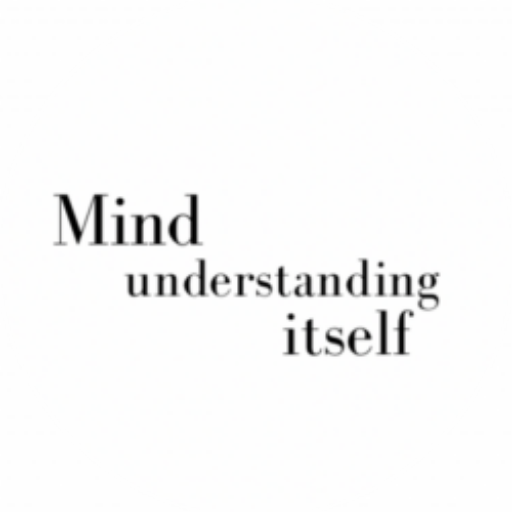Self Help: How to Make That Change in Your Life
1. Know What You Want to Change
You might already know what needs to be changed or you just have a sense that something in your life has to change, but you do not know what it is. Gilbert Chesterton said “Sometimes the problem is not not being able to see the solution, but not being able to see the problem.”. Evaluating where you stand in your life areas might help. We have many areas in our lives such as social area, family area, romantic life, recreational area, financial area, career/educational area, spiritual area, physical area, and so on…
You can use Bull’s Eye chart below that is designed and used for acceptance and commitment therapy.
On the chart you can see four domains of life: work/education, leisure, relationships and personal growth/health. For each area, try to find out your values, and how far or how close you stand by your them by asking yourself questions such as:
How is it now, and how i’d prefer it to be? How I’d wish it to be?
What is the more appropriate/ideal form of this situation?
What is it that I want it to be different than it is now?
What would I change if I had a magic wand?
What are the choices available?
What are the alternatives/options?
I love to remember Marcus Aurelius’ words: “Think yourself as dead. You have lived your life. Now, take what is left, and live it properly.” HOW WOULD YOU DO IT IF YOU HAD A SECOND CHANCE?
You might be needing to
-initiate a behavior (for exp. starting exercising, which is in the health area),
-modify it (for exp. changing your study hours, which in the education area), or
-cease it (for exp. qutting smoking, again in the health area, and might be also in the financial area if your concern is spending too much money for cigarettes.)
You might need to change only one thing only or many, which might be all in the same area or in different life areas. It can look overwhelming untill they are put in order of priorities. To be able to know where to start you can make a list where you write down all the things you wished to be different than it is now, and then order them considering how much their changing would affect your life in a good way. Start with the one that will have the largest effect.
When choosing a goal to work on, there are few points to consider:
Getting Clear About What You Mean By Change
Sometimes what you want to change is not clear cut like quitting smoking, but it is more flu like losing weight. In that situation it can be more helpful to define a more specific end goal, such as losing 10 pounds in a month. To be able to find this you can ask yourself:
When/In which circumstances would you say that you are satisfied with the change?
When/In which circumstances you wouldn’t be bothered anymore by the issue?
Make Sure that Your Goal is Realistic
There are things in life we cannot change, or even control. For example, we cannot change our feelings. For this reason, wanting not to feel sad anymore, is not an appropriate goal for change.
2. Identify and Question Your Thoughts About Change
Whether you’ve already given serious thought about that change or not at all, you probably have an attitude towards it. You might be against it, willing to change, or ambivalent about it. In psychotherapy, especially for cognitive behavioral therapy, understanding your attitude towards change is one of the first things one should look at when considering change, and to be able to do this one should try to understand why one does not want to change, and why one wants to change.
Reasons not to Change
Now that you have a sense of what you want to change, go ahead change it! Nope! I know it is not that easy. If it were, you would do it already. I am sure you have very good reasons not to change. You might think:
“My wife threatened me that we’ll get a divorce if I don’t quit, but I don’t really want to.” ,or “…she can’t tell me what to do.”
“I know something needs to change, but i just dont feel like doing it.”
“I want it to change, but I can’t do it.”
“I tried many times. It didn’t work.”
“it doesnt work. Why would i try as my efforts are so useless?”
“It is too late anyway.”
“Why am i the one who needs to change?”
“3 cigarettes a day won’t hurt, it’s not like i smoke the whole package.”
“I don’t know if I can do it.”
“I want to, but I don’t know how to do it.”
Maybe none of the above fits you. Sometimes you don’t even know why, but you know that there is a reason. You feel that it is there, but you cannot define it. Maybe it is a doubt, maybe it is a fear. You feel stuck! Maybe you are saying to yourself:
“I know I must quit that, do this, stop that, but I just keep doing it. I don’t know what is wrong with me.”
“I know I shouldn’t be eating this crap but I keep doing it.”
Know that that’s ok too. I still know that you have your own good reasons even though you cannot define them.
In a situation like that know that first of all it is normal that you have these thoughts. Our brains don’t like change unless it surely knows that it will be better (even that doesn’t work most of the time). Unfortunately our brain cannot acknowledge and accept that change will be good for us until it sees the results (even that takes a veery long time right?). This is because that’s how brain works. It prefers the way where it will have to use minimum amount of energy, yet optimum enough to keep us alive. So your alcohol problem may not be working for your wife, but it seems to work for your brain. However, your relationship with your wife may also be important for you. Then, why doesn’t your brain care about that? it just CAN’T. As I said, it chooses the shortest, easiest way that will work. It can’t focus on your long term goals (without your help) even though they will make you happier in the long run. What to do then? Just know that having these thoughts is normal, and in fact expected. Question them when you can (you can refer to “how to challenge automatic thoughts” article for that purpose) , and when you can’t do that, just listen to these thoughts, and recognize their existence. That’s all.
What About the Pros of the Change? Reasons to Change
Search if there are reasons that change might be good for you.
Search the Reasons Why “Not Changing” might be a Problem
Are there any reasons not changing might be a problem?
Why is it a problem? When/in which circumstances is it a problem?
What are the disadvantages of the situation now?
What are the difficulties of the way you handle things now?
What if Change would Be Possible?
Just IMAGINE. Forget all the BUTs for one moment, and IMAGINE that you did it! Change is here, and now.
How does it look like?
How does it feel?
How does it feel like to finally be able to live according to my value(s)? my wish(es)?
What is better now?
What is easier?
How does it affect my life? my wellnes? my relationships? my relationship with . . . ?
3. Evaluate What You’ve Got (the situation)
Considering all the cons and pros, decide the importance of the change in your life.
Is it worth it?
If the answer is yes,
Explore the abilities you have that will help you achieve this.
What are your skills/personality traits that will help you achieve your goal?
What are your weaknesses that might be a problem for you while you try to reach your goal? How can you overcome them?
How ready are you to do this?
“Do you believe you can do this?” (from the movie “Little Boy”). “Little Boy” is one of our family’s favorite movies. Have you seen it? It is a story of a little boy who believes he can end the World War II, and bring his father back if he does the tasks on a list given to him by his friend, and mentor Father Oliver. The movie is actually not clearly about change, but about believing oneself and do what can be done. Although Little Boy’s goal seems unrealistic, his belief in himself is so big that he makes you believe in him too. It is one heartwarming story.
4. How to Get There
Think about your options to get there.
IF your best friend(or a loved one) would be in the same situation, thinking exactly what you’re thinking, and believing exactly what you’re believing, feeling exactly how you feel, and he/she has wishes, purposes similar to yours, and he/she values what you value:
What would you suggest this person to do in this situation? What can he/she do?
Although a part of you might be believing that you can’t do it, IMAGINE for a moment that you are a hero capable of making it possible. How would you do it?
After you found out possible ways to achieve your goal, choose the most appropriate one(s). Make sure that it is in accordance with your values, it is doable, and it is effective in the long run.
For exp., let’s say that Laura wants to lose 10 pounds in a month. She writes down ways to solve the problem:
-stop eating carbs completely (she later thinks this is not doable, or even appropriate. our bodies need carbs. )
-run every morning, and work out for 2 hours in the evening (she later thinks this is not doable, or appropriate)
-balanced diet for a month only (she later thinks that this won’t be effective in the long run)
-exercising when she can, following a balanced diet when she can (she thinks this is the MOST appropriate way FOR HER, for her values, for her wishes)
5. Define the Steps
Let’s assume that we ask Laura:
What do you mean by a balanced diet?
“Sufficient amount of carbs, fat, and proteins.”
What do you mean by sufficient?
What do you mean by following a balanced diet when you can? How can you do this?
What can you do to make it easier for you to have a balanced diet? What are the little things you can do?
What do you mean by exercising when you can? What are the little things you can do to make this easier for you?
When would be the right time to start this plan?
6. Analyze the Possible Problems Related with the Steps
Let’s continue with Laura exp:
What are the possible problems you can encounter while trying to do these in order to have a balanced diet?
What are the possible problems you can encounter while trying to exercise when you can?
Are there things you can do to prevent these problems?
What can you do if one of these possible scenarios ever happen? How can you overcome that problem? What can you do?
7. Don’t Forget
You might fail. Probably, you will too. However, failing is good. It teaches us how not to do something.
Oh, you will want to give up. You will have those thoughts. Again and again! You will doubt, AGAIN! Remember that our brains don’t like or prefer change. So, know that this is EXPECTED. Yet, you don’t have to do anything about it. It is enough to be aware of it, and question your automatic thoughts if you can. That’s all.
Lastly, keep reminding yourself at every single step, you weren’t here before.
And remember the Little Boy.
Guess this is all for today. I will edit this post as it is necessary.
I would love to hear about your thoughts and ideas! Please share them with me below at the comments section.
I will be sharing lots of case examples in the future. If you have an automatic thought you are having trouble with, you can write it to me, and I can try to help you out.
Thank you very much for reading.
References
Bulls Eye Values Exercise. Drexel University Counseling Center. Retrieved August 28, 2018 from drexel.edu
Eskin, M. (2012). Sorunlarımı Çözebilirim. HYB Basım Yayın, Ankara.
Little Boy (film). Retrieved, August 30, 2018 from https://en.wikipedia.org/wiki/Little_Boy_(film)







One Comment